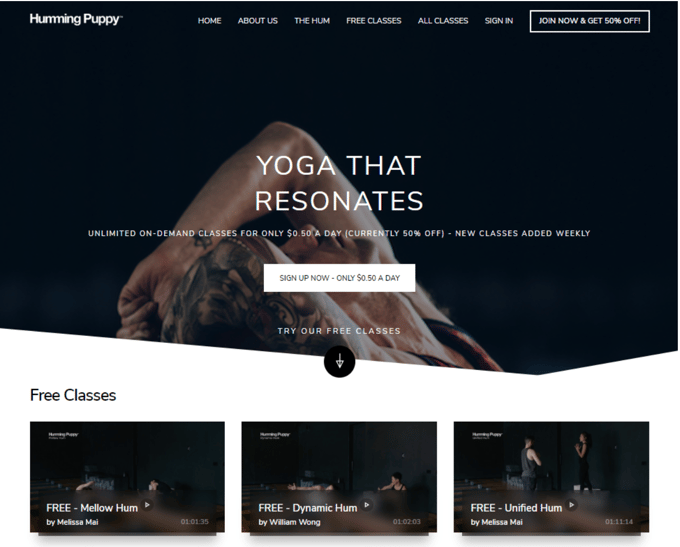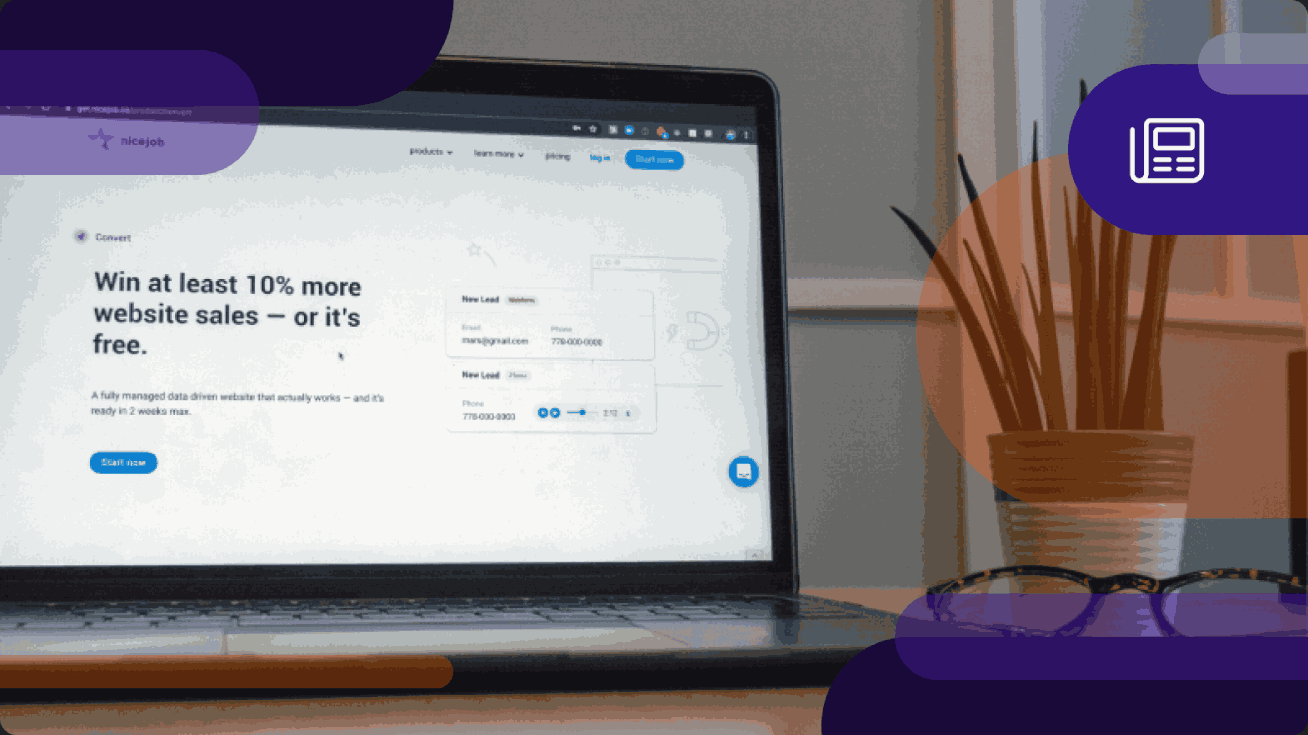How to Create a New Revenue Stream by Monetizing Videos
How to create, distribute and sell videos online
Business isn’t what it used to be. While there is still a place for brick and mortar outlets, many business owners realise that being online offers a chance to reach more customers and make more money.
There are many ways to grow a profitable online business. In this blog post, we’re going to explore how to create your own online streaming video business.
It may sound impossible but it’s not. Like all new ideas, building a profitable online video business will take a shift in mindset. You’ll also need new knowledge to set your brand up for success.
In this blog post, I’ll share how to identify who to create videos for and how to come up with ideas for your videos. We’ll also cover how to make money using videos, how to set up your online video platform with ease, and how to get people to watch your videos.
There’s a lot to cover, to let’s dive in.
Why now is the best time to start to monetize video content
Online video consumption is growing. People are watching more videos on all sorts of platforms and devices. From Netflix, Hulu and Disney+, to social media, people are highly-attracted to video. For instance, did you know that Facebook gets 8 billion video views a day, where Twitter gets 2 billion?
And don’t forget YouTube. With an audience of 2 billion monthly users, YouTube is home to videos spread across almost any niche you can think of. Video creators upload 500 hours of video a minute and the platform streams over one billion hours of video daily.
But what about your business? Can you really create a profitable online video brand?
3 reasons why your small business should sell videos online
1. Selling videos online can work for any business
It’s no secret that some industries started making money with video sooner than others. Take the fitness industry. Today, we have yoga, pilates, and strength training fitness professionals running successful online businesses using online video sharing platforms and distribution companies like Uscreen.
Monetizing video for your brand is all about translating your core value proposition.
A good question to ask yourself is: “what expertise or knowledge do I have that can be translated into online video?”
Once you’ve identified exactly what that is, with a little creativity, you can begin to offer monetized videos to your audience.
For example, Birdietime is dedicated to helping people become the best golfers they can be. When people can’t get to a golf course, they can access hours of high-quality coaching on how to improve their game. For $11.90 per month or $99 a year, they offer access to over 400 lessons.

2. There’s always room to sell videos online; your market isn’t saturated
Don’t worry about what other people are doing. While there are likely many people with similar ideas, possibly even creating similar video content, think of your video content as an extension of your brand into the online space. Instead of strictly offering in-person service or a brick and mortar storefront, reach new and existing customers online with your videos. Creating an online presence simply means moving your customers online.
Furthermore, if you can translate what makes your product or service in your videos, people will come looking for that.
Take Humming Puppy, for example. There are tons of yoga professionals creating videos online, but transitioning from a brick and mortar yoga studio to a complete online yoga studio allowed them to bring their customers online with them.
Moreover, what separates Humming Puppy from other online yoga brands is their evolved yoga practices. Classes include humming sounds designed to immerse students, aiding relaxation and easing body movements.
In this instance, although there may be many yoga professionals offering online videos, Humming Puppy tapped into their unique selling proposition to carve out space in a crowded market.
In other words, even if there are other people creating video content similar to the type of content you can provide, there’s always space to thrive on the internet.

3. You don’t need any special technical skills to start monetizing your videos
Contrary to popular belief, you don’t need to be a computer programmer to create, distribute and sell videos online. You will, however, need some basic equipment to capture and edit your videos.
The good news is that you can find equipment for affordable prices on Amazon, and there are many free and easy-to-use video editing tools designed for beginners.
And when it comes to creating your platform, where you’ll share and monetize videos, the set up process isn’t difficult at all (more on this below).
A six-step process to start monetizing your videos
Step one: identify the audience who will watch your video content
Any business needs to have a clear understanding of who their target audience is. Without it, you won’t be able to show people what makes your brand unique, or why they should watch your video content.
Getting to know who your audience takes a little bit of research. You’ll need to create personas for each type of customer you have to identify their interests, needs, and challenges, and understand how those align with your brand and product.
If you’re looking for more on how to create the perfect persona, head over to DigitalMarketer and download a free copy of their customer avatar. It includes all you’ll need to build strong and effective personas before you start to sell videos online.
The audience of your videos doesn’t need to be the same as the audience for your business either. You can create videos for your industry peers, students, and/or apprentices and even for your competitors.
![]()
Step two: establish what you’ll share in your videos
With your personas in place, creating content becomes simpler. You’ll be producing videos that address your audience’s interests, needs and challenges.
You can offer anything from weekly episodes to a collection of videos that teach your audience something new. What’s important, at this stage, is to know what direction you’ll take. By doing research, you’ll learn more about your audience and how your product/service can help them.
Get started by putting pen to paper and jotting down ideas. Think of your ideas as solutions to problems you know your audience has.
Jessica Lewis, for example, is a hairstylist. For four years, she offered sell-out in-person workshops at her salon, teaching aspiring hairstylists how to take their careers and businesses to the next level. When she decided to go online, her core value proposition was education. She knows how to help business owners in her industry elevate their brands.
Today, she offers workshops on hairstyling techniques and business, and customers can buy or rent them through her online video sharing platform.

Step three: choose your video monetization model
Making money from your videos is easier than most imagine. You’ll simply need to choose how you want to offer your videos. Here are two ways to make money with your videos:
Sell monthly subscriptions (also known as subscription video-on-demand)
Subscription video-on-demand (SVOD) allows you to sell your videos to viewers for a monthly subscription. Just like Netflix or Hulu, you can charge a set fee for access to your very own content. Once paid for, a subscriber will have access to all videos in your library until they choose to cancel their subscription.
Offer one-time purchases (also known as transactional video-on-demand)
Transactional video-on-demand or TVOD, on the other hand, allows you to offer videos for rent or once-off purchase, otherwise known as pay-per-view.
You can opt for both or one of the above options.
Step four: build your video on demand platform
A few years ago, trying to launch an online video business meant heavy capital investment in hardware, software and staff to get and keep your video business running. Today, it’s far simpler and you can do it all on your own, from the comfort of your home.
Platforms like Uscreen are an all-in-one video monetization solution that empowers businesses to launch profitable video businesses. They help you do everything from build a video streaming website and host your videos online, to launching an Android TV app without coding experience.
Here’s a look at the tools you'll need to build a video on demand platform:
- A website: You’ll need online real estate to send viewers to access your videos. Building a site is easier than you think.
For example, Uscreen offers a collection of easy-to-use themes that anyone can customize for their brand. It’s as easy as adding your own images and messaging.
Or, if you want to take this a step further, and are looking for a professional site, you may want to consider Convert. A Convert site is professionally designed by a website strategist, with the goal of helping you win more business through your website.

- A video player: Offering online video can only happen if people have a way to easily stream video. This includes using a content delivery network that makes your videos available to customers no matter where they are in the world, and without lag.
- A payment solution: Billing is a core component of monetizing videos online. You’ll need a way to charge viewers and manage payments with ease.
- Marketing and communications tools: The best platforms include membership site functionality. Membership sites make it easier to create a community around your brand, one that keeps customers coming back and feeds your business with ideas for more content.
- Live streaming capabilities: In the last few years, live streaming has grown dramatically. Research firm Nielsen found that as many as 42% of the U.S. population has streamed online content. When you build your online business, make sure you can host live video events. They are a great way to engage with your audience and an option you should take advantage of.
Step five: launch your Over-The-Top app
OTT or over-the-top apps are created to play video on various devices. And launching your own OTT app doesn’t require computer programming skills and can be lucrative. We’ve found that Uscreen customers who launch an OTT app experience as much as a 30% boost in revenue.
The great thing about OTT apps is that they span across various platforms, making it possible to reach a larger audience. Today, you can make your monetized video content available on a Roku channel or AppleTV, without any coding experience or having to develop an app from scratch.
Step six: advertise to help make more sales from your video content
Building it and hoping they will come isn’t a growth strategy. To experience the kind of success you want, you’ll need to promote your videos just as you would any other kind of content, product or service. The great news is that there are tons of places to showcase your content. From social media to search engines and industry-related websites, here are three proven ways to spread the word:
- Using your social media accounts and share snippets to hook viewers and drive site traffic.
- Create email broadcasts to your list of subscribers.
- Used paid ads to reach a wider audience faster.
Conclusion: Creating a new revenue stream by monetizing videos is absolutely within reach for small businesses
Online video allows you to generate revenue by translating what makes your business special into monetizable videos. Getting started means stretching yourself a little, but once you’ve established your online video brand, you’re on your way to a strong, more reliable revenue stream.
*This article was written in partnership with UScreen - The #1 VOD Platform for Video Monetization.
** About the author: Amir Shahzeidi is the digital marketing manager at Uscreen, an all-in-one video
monetization and OTT platform provider that empowers video entrepreneurs and creators to monetize their content and build thriving businesses around their videos.




